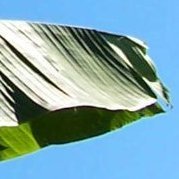Help - How to clean Rice Field Burning Cinders and Dust from Swimming Pool
-
Recently Browsing 0 members
- No registered users viewing this page.
-
Topics
-
-
Popular Contributors
-
-
Latest posts...
-
172
US Pushes Forward with Private Aid Plan for Gaza Amid UN Opposition
Absolutely not! It’s becoming clear who is paying this GHF. Check out this article. One scenario estimated more than 500,000 Gazans would leave the enclave with “relocation packages” worth $9,000 per person, or around $5bn in total. https://www.ft.com/content/c0e661cc-55db-4e2a-b17b-a656e0cf6c14 -
203
Advise on buying a BYD car.
Ok, enlightened one, funny that you're talking about propaganda when it seems that is what you have been swallowed copious amounts of. Can you share you source of your enlightenment please? Where do you seek the truth from? Please share. -
37
USA Trump's 'Golden Age': A Two-Week Blitz of Political Dominance and Policy Wins
Well Im shocked by the way y'all profit off the war. Next. -
118
Putin is Scum, But Ukraine is Not a Country
Ukraine was independent for about 70 years if I'm not mistaken. With 0 territory. Because all the land belonged to the winner of the Second World War, Russia, which was then called the USSR. In the early 1990s, Ukraine, which had been an independent country in the UN for about 50 years, once again declared its independence. Journalists around the world for some reason began to tell their citizens that this meant leaving the Soviet Union. Why did they decide this? Nobody knows. If, for example, France declares tomorrow that it is independent, does this mean leaving NATO? Obviously not. -
29
My Gov, the app
Last time I called CLink the wait was about 25-30 minutes. I find it best to call on Wednesdays and before lunchtime in Australia - Mondays and Fridays are always very slow. Extra people are calling and the public servants have those two days off a lot more than the others. -
5
Laws, Regulations and Police Orders.
I'm still trying to recreate the problem that Liquorice reported to me via PM. No luck so far. A couple of links have gone dead, which is not surprising with government websites.
-
-
Popular in The Pub














Recommended Posts
Create an account or sign in to comment
You need to be a member in order to leave a comment
Create an account
Sign up for a new account in our community. It's easy!
Register a new accountSign in
Already have an account? Sign in here.
Sign In Now